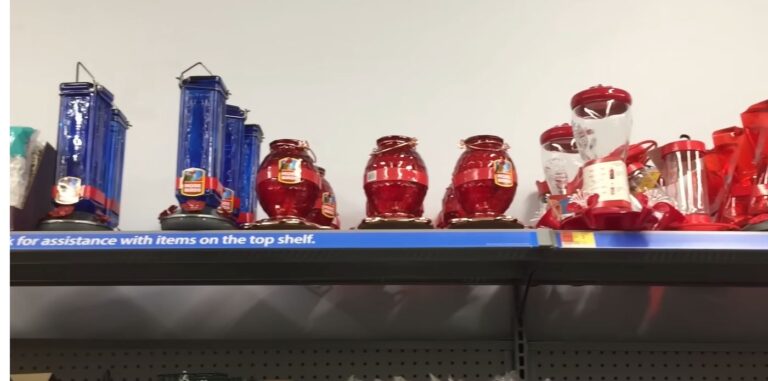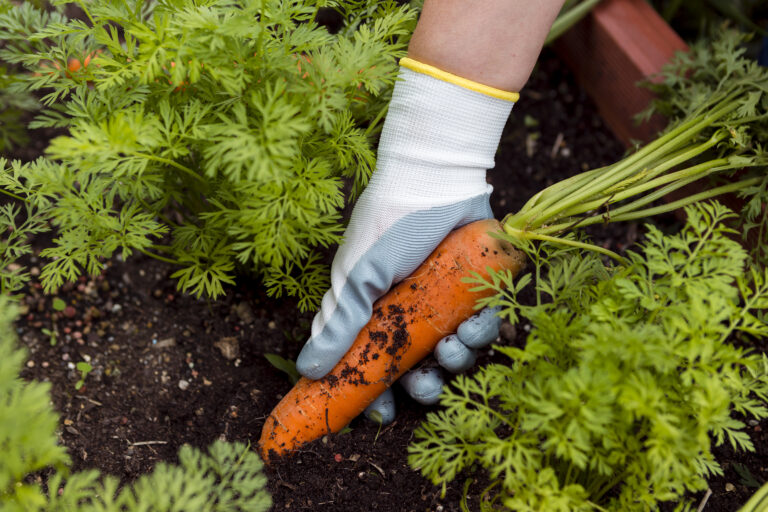Can You Freeze Glass Containers with Plastic Lids? A Complete Guide
Freezing food in glass containers with plastic lids is a common question for home cooks and meal preppers.
While glass is durable, eco-friendly, and excellent for preserving freshness, not all containers are designed for freezer use.
Plastic lids add convenience but can warp or crack if not chosen carefully.
In this guide, we’ll explore whether you can safely freeze food in glass containers with plastic lids, the risks involved, and the best practices to keep your meals fresh and your containers intact.
Switching to glass containers for food storage, especially for freezing, is a choice that reflects both a commitment to health and environmental responsibility. These transparent, non-porous vessels offer excellent long-term storage. However, the question often arises: Can you freeze glass containers with plastic lids safely and effectively?
Success in freezing glass relies on understanding two critical components: the physics of glass and the expansion of the food inside, and the structural limits of the lid used to seal the container. This guide will focus specifically on how the plastic lid durability interacts with the superior freezer safety of the glass body to ensure a successful, long-lasting glass container storage system.
Table of Contents
ToggleWhy People Prefer Glass Containers for Freezing
The surge in popularity of glass containers for food preservation is driven by clear advantages over traditional plastic or disposable materials.
Eco-friendly Benefits
Choosing glass is a significant step toward a sustainable lifestyle. Glass is infinitely reusable and made from natural materials, making it a highly desirable eco-friendly alternative to materials that contribute to landfill waste and plastic pollution. When a glass container’s life finally ends, it can be recycled with ease, closing the loop on kitchen waste.
Non-toxic and BPA-free Storage
Health is a major factor. Unlike some plastics which may contain chemicals like BPA or phthalates, glass is naturally non-toxic and BPA-free. This provides peace of mind, especially when storing food that will be reheated. There is no risk of chemicals leaching into your food, even after prolonged exposure to heat or extreme cold.
Better Taste and Freshness Retention
Glass is entirely non-porous. This means it will never absorb odors, flavors, or stains from the food it holds (unlike plastic, which often retains the smell of garlic or tomato sauce). This non-porous surface ensures that food maintains its original better taste and freshness retention when thawed and reheated.
Understanding Glass Types and Freezer Safety
Not all glass is created equal, especially when facing the extreme temperature shifts required for freezer storage. Knowing your glass type is the first step toward preventing breakage.
Borosilicate Glass: Thermal Resistance
This is the gold standard for freezer-to-oven convenience. Borosilicate glass is specifically engineered to withstand sudden and dramatic temperature changes, a property known as thermal resistance.
- How it Works: Borosilicate glass has a very low coefficient of thermal expansion. In simple terms, it changes size very little when heated or cooled rapidly. This minimizes the internal stress that causes sudden cracking when moving food directly from the freezer to an oven or microwave.
- Identification: This type of glass is often used for high-end glassware, laboratory equipment, and is the material of choice for premium food storage brands designed for all-in-one prep and cooking.
Soda-lime Glass: Fragility in Freezing
The glass used for standard drinking glasses, inexpensive storage jars, and most general-purpose containers is soda-lime glass.
- The Risk: Soda-lime glass has a higher thermal expansion coefficient. This makes it much more susceptible to fragility in freezing, especially when faced with large temperature differentials.
- The Rule: While safe for the freezer if precautions are taken (like cooling the contents completely first and thawing gradually), it is not safe for sudden temperature changes. Placing a frozen soda-lime jar directly into a preheated oven is almost guaranteed to result in breakage.
Role of Plastic Lids in Freezer Storage
While the glass container handles the temperature, the plastic lid plays an equally important role in sealing the food and is often the weakest link in the freezing process.
Flexibility at Low Temperatures
The most critical factor for a plastic lid is its flexibility at low temperatures.
- The Issue: Not all plastics are designed for the freezer. Rigid, brittle plastics can become even more brittle when exposed to sub-zero temperatures. If you drop a container or try to force a seal, a brittle plastic lid can easily crack or shatter.
- The Solution: Look for lids made from polypropylene (PP) or low-density polyethylene (LDPE), which maintain a degree of flexibility even in the freezer, allowing them to stretch slightly with the container and resist cracking upon impact.
Silicone Seal vs. Rigid Plastic
The sealing mechanism determines how well the lid keeps air out and prevents freezer burn.
- Rigid Plastic Lids (Snap-on): These lids rely on the rigidity of the plastic and a tight fit to form a seal. While inexpensive, the seal is often imperfect, allowing air and moisture to pass, which can lead to freezer burn over time.
- Silicone Seal (Gasket/Vent): The best freezer lids incorporate a silicone seal or gasket running along the perimeter. This soft, pliable ring compresses tightly when the lid is locked, creating an airtight and watertight barrier. This airtight silicone seal vs. rigid plastic is superior for long-term freshness and prevents freezer-burn (sublimation) by locking moisture in.
Can You Freeze Glass Containers with Plastic Lids?
The simple answer is yes, you absolutely can freeze glass containers sealed with plastic lids, provided you adhere to specific safety protocols for both the glass and the lid. Glass containers offer a superior, non-toxic storage environment, but their rigid nature requires careful handling when facing the pressure of freezing liquids.
Short Answer with Safety Considerations
The Short Answer: Yes, glass containers are excellent for freezing, but safety hinges on headspace and temperature control. You must always leave ample room for expansion, and the plastic lid must be rated for freezing to prevent it from cracking or warping in the extreme cold. Ignoring these factors can lead to broken glass, shattered lids, and contaminated food.
Factors That Determine Success
Success in freezing glass containers sealed with plastic lids is a formula based on three key factors:
- The Glass Type: Using thick, durable glass, ideally borosilicate, minimizes the risk of cracking from thermal stress.
- Headspace: This is non-negotiable. Liquids expand by about 9% when frozen; if the lid is sealed too tight or the container is too full, the expanding ice will shatter the glass before the lid has a chance to yield.
- Lid Material: The plastic lid must be made of a flexible, freezer-grade plastic (like PP or LDPE) that can handle the cold without becoming brittle. The lid must also allow a slight amount of air movement or pressure release, especially if the jar is slightly overfilled, acting as a secondary safety valve.
Risks of Freezing Glass Containers
Understanding the potential failures is the best way to prevent them. Freezing glass containers introduces a few distinct risks that you must actively manage.
Cracking Due to Thermal Shock
This is the most common cause of failure. Thermal shock occurs when the glass structure experiences a sudden, extreme change in temperature, creating uneven stress within the material.
- Sudden Cooling: Placing a hot or even warm container of food directly into a sub-zero freezer causes the outer layer of glass to contract rapidly while the inner layer remains expanded. This uneven stress leads to cracking, often resulting in a messy fracture line running from the bottom upward.
- Rapid Thawing: Similarly, taking a rock-solid frozen container and placing it directly into boiling water or a hot oven can cause the opposite thermal shock, shattering the glass as the exterior expands far too quickly.
Lid Warping or Breaking
While the glass handles the temperature, the plastic lid handles the pressure and the cold.
- Brittleness: In the deep cold of the freezer, many types of plastic become rigid and brittle. If the lid is snapped onto the frozen container with too much force, or if the container is accidentally dropped, the plastic is highly susceptible to warping or breaking rather than flexing.
- Seal Failure: A rigid lid that is forced by expanding ice may warp permanently, ruining its ability to seal effectively after it is thawed. This leads to poor long-term freshness and freezer burn.
Food Expansion Issues
Even if the glass is temperature-stable, the contents inside present a danger.
- Pressure Build-Up: Liquids that are filled too high leave zero margin for the 9% volume increase. The expanding ice acts as an immovable wedge, exerting hundreds of pounds of force directly against the rigid glass walls and the lid. This food expansion issue will break the glass before the ice ever pushes hard enough to pop the lid off.
How to Safely Freeze Glass Containers with Plastic Lids
Following these three expert guidelines will eliminate over 95% of all potential breakage risks associated with freezing in glass.
Leave Headspace for Expansion
This is the Golden Rule of freezing liquids in rigid containers.
- Liquids (Soups, Sauces, Broths): Always leave a minimum of one inch of headspace between the top of the food and the lip of the container. For larger, quart-sized containers, it is safer to leave up to 1.5 inches. This empty space is the only way to accommodate the expanding ice safely.
- Semi-Solids (Chili, Yogurt, Dips): Because these items have less free water, they require slightly less room, but still need about half an inch of headspace to be safe.
Cool Food Before Freezing
Managing the temperature transition is key to protecting the structural integrity of the glass.
- The Fridge Step: Never place warm or hot food directly into the freezer. Cool food before freezing by allowing it to reach room temperature (about 70∘F) on the counter, then move it to the refrigerator for several hours until it is fully chilled.
- Gradual Transition: This gradual chilling prevents the rapid, uneven stress on the glass that causes thermal shock.
Avoid Sudden Temperature Changes
The safest glass is that which is never rushed.
- Freezer Placement: Place chilled containers in the center of the freezer, away from the icy walls or cooling coils, which are the coldest spots. Do not stack containers until they are completely frozen solid.
- Thawing Protocol: When thawing, always move the frozen container to the refrigerator first. This gentle, slow process avoids the thermal shock that occurs when a rock-solid, freezing container is exposed to hot air or water.
Best Practices for Using Plastic Lids in the Freezer
The plastic lid is your secondary safety feature, and treating it correctly can prevent warping and preserve your food’s quality.
Choosing Freezer-Safe Plastics
Always verify the material and rating of your lids.
- Look for Flexibility: The best lids are made of flexible, freezer-grade polypropylene (PP, usually marked with recycle code #5) or low-density polyethylene (LDPE, code #4). These materials retain elasticity in the cold.
- Avoid Brittle Lids: Avoid lids made of rigid polystyrene (PS, code #6) or standard acrylics, as they become extremely brittle in the cold and will easily crack when handling.
Checking for BPA-Free Labels
Even in the cold, prioritizing non-toxic materials is a cornerstone of safe food storage.
- Non-Toxic Guarantee: Ensure your plastic lids are clearly marked as BPA-free. While the cold temperature significantly reduces the risk of chemical leaching compared to high heat, choosing certified non-toxic plastics is the best practice for health-conscious cooking.
Avoiding Over-Tightening Lids
This is a subtle yet crucial rule, especially for containers with silicone seals or gaskets.
- The Slight Yield: When you freeze liquids, the slight expansion of the food might put pressure on the seal. If the lid is over-tightened, the seal becomes rigid and unable to accommodate this minor pressure change, causing the glass to bear the brunt of the force.
- The Best Seal: Seal the lid securely to engage the gasket, but avoid applying maximum force. This allows the lid to serve as a slight pressure release valve if the food expands slightly more than anticipated, protecting the glass.
Step-by-Step Guide to Freezing Food in Glass Containers
Follow this sequence for guaranteed success every time you freeze food in glass.
- Preparation of Food: Cook and then allow the food to cool to room temperature on the counter before placing it into the container.
- Container Selection: Choose straight-sided, wide-mouth containers (ideally borosilicate glass). Ensure the plastic lid is freezer-safe and BPA-free.
- Filling and Headspace: Fill the container, leaving a minimum of one inch of headspace from the top rim. Clean any residue from the rim and threads, then seal the lid securely but not aggressively.
- Freezing Process: Place the sealed containers in the refrigerator for four to six hours to chill completely. Once chilled, move them to the freezer, ensuring they are placed upright and away from the coldest walls.
- Thawing Safely: To thaw, move the container from the freezer directly to the refrigerator. Allow it to thaw slowly over 12-24 hours. Never expose a frozen container to sudden, high heat.
Foods That Freeze Well in Glass Containers
The key to freezing food successfully in glass is choosing items that minimize the risk of pressure buildup.
- Soups and Stews: Excellent choices, provided the headspace is generous. The high liquid content means they freeze evenly.
- Cooked Grains and Beans: Cooked rice, quinoa, and beans are fantastic as they have less free water and less expansion risk.
- Fruits and Vegetables: Most chopped fruits and vegetables, like berries, corn, peas, and roasted vegetables, freeze perfectly, as they are not suspended in a fully expanding liquid.
Foods That Should Not Be Frozen in Glass Containers
Avoid these items, as they dramatically increase the risk of jar breakage.
- Carbonated Beverages: The dissolved gases will expand far beyond the 9% water expansion rate, almost guaranteeing a break.
- High-Water-Content Vegetables: Items like raw celery, lettuce, or cucumbers become mushy upon thawing and contain trapped water that can be forced against the glass walls.
- Dairy-Heavy Sauces: Cream-based sauces and milk-heavy liquids tend to separate and curdle when frozen and thawed, degrading the texture and taste significantly.
Comparing Glass Containers with Other Freezer Options
Each freezer storage option has its distinct advantages, depending on whether you prioritize flexibility, durability, or cost.
- Plastic Freezer Bags: These are incredibly flexible and eliminate the expansion risk entirely. They are the cheapest option and maximize space by freezing flat. The downside is their single-use nature and potential for toxic leaching if not certified BPA-free.
- Stainless Steel Containers: Offer extreme durability, are completely non-toxic, and are unbreakable. They are excellent for batch cooking but are the most expensive upfront and are generally not microwaveable, limiting reheating versatility.
- Silicone Freezer Molds: The best option for liquids. They offer maximum flexibility, are non-toxic, and allow frozen contents (like soup cubes) to be popped out, stored loosely, and reheated with ease. Their capacity is often limited to smaller volumes.
Common Mistakes to Avoid When Freezing in Glass
Even with the best intentions, small errors can lead to breakage or food spoilage when freezing in glass. An expert freezer planner avoids these common pitfalls by respecting the physics of expansion and temperature.
Overfilling Containers
This is the single biggest reason glass shatters in the freezer. As professionals know, water expands by approximately 9% when it transitions to ice.
- The Problem: Overfilling containers by failing to leave adequate headspace provides no room for this 9% expansion. The trapped ice exerts immense lateral pressure on the rigid glass walls, causing them to crack outward, often with disastrous results.
- The Fix: Always leave at least one inch of headspace for liquids in wide-mouth containers. For containers with sloped shoulders (which should be avoided for liquids anyway), the liquid level must stay well below the shoulder line.
Using Hot Food Directly
This mistake relates to thermal shock and is an immediate threat to the container’s integrity.
- The Danger: Placing hot food directly into a room-temperature or cold glass container and immediately sealing it creates massive, uneven stress. The outer glass cools rapidly, contracting, while the inner glass remains hot and expanded. This thermal differential often results in immediate cracking.
- The Fix: Always follow the two-step cooling process: cool the food to room temperature (about 70∘F) on the counter, then chill it fully in the refrigerator for several hours before transferring it to the freezer. This ensures a gentle, gradual temperature change.
Stacking Improperly
While not a direct cause of thermal shock, improper stacking can lead to breakage through simple impact.
- The Risk: Glass becomes more rigid and less resilient in sub-zero temperatures. Stacking improperly (especially if containers are leaning or top-heavy) risks accidental impact. If a frozen, rigid glass container falls or is struck by another heavy item, it is more likely to crack or shatter than a plastic container.
- The Fix: Ensure all containers are frozen solid before stacking. Use freezer bins or dividers to keep the glass upright and stable, minimizing accidental contact with freezer walls or other hard, heavy items.
How Long Can You Store Food in Glass Containers in the Freezer?
The safety and longevity of the glass container itself are rarely the limiting factor; it’s the quality and shelf life of frozen meals inside that determines storage time.
Shelf Life of Frozen Meals
Glass containers, when sealed with an airtight lid, provide an excellent barrier against moisture loss, maximizing the usable shelf life of frozen food.
- General Rule: Most cooked meals (soups, stews, chili) and cooked meats can be safely stored for 3 to 4 months before the quality starts to degrade. Items like raw poultry or ground meat can last up to 6 months.
- Best Quality: For best taste and texture, aim to consume all frozen meals within the 3-month mark.
Signs of Freezer Burn
The primary cause of quality degradation in the freezer is freezer burn, which glass containers are excellent at preventing, provided the lid seal is intact.
- What It Is: Freezer burn occurs when the air inside the container causes moisture on the food’s surface to turn directly into ice vapor (sublimation). This leaves the food dry, discolored, and spongy.
- Prevention: The best way to prevent this is by using high-quality lids with silicone gaskets and minimizing the air inside the container before sealing. If you see ice crystals inside the food itself, that’s normal. If you see large, fuzzy patches of ice crystals on the food surface, that is a sign of a poor seal or excess air, indicating freezer burn.
Cleaning and Maintaining Glass Containers After Freezing
Proper maintenance is simple but critical for extending the life of your glass and plastic components.
Safe Thawing Methods
The most important maintenance step is ensuring a crack-free thaw.
- Refrigerator Thawing: This is the safest method. Moving the frozen glass container directly to the refrigerator allows for slow defrosting, minimizing thermal shock and adhering to food safety guidelines.
- Running Water: If you need to thaw quickly, place the glass container in a large bowl under slow, cool running water. Never use hot water, as the rapid temperature change will crack the glass.
Dishwasher vs. Handwashing Lids
The longevity of your plastic lids depends on your cleaning method.
- Glass: The glass container itself is safe for the dishwasher and can handle high heat.
- Plastic Lids: Always check the manufacturer’s directions, but generally, place plastic lids on the top rack of the dishwasher or handwash them. The high heat of the bottom rack or the drying cycle can cause the plastic to warp or degrade, ruining the airtight seal.
Checking for Cracks
A quick inspection can prevent a freezer catastrophe.
- Pre-Fill Check: Always quickly inspect jars for any nicks, chips, or fine cracks before filling them. Glass that is already compromised will certainly fail under the expansion pressure of freezing.
- Post-Thaw Check: After thawing and washing, examine the empty container. If you notice any hairline fractures, discard the jar safely; it is no longer safe for freezing or food storage.
Cost and Sustainability Benefits of Glass Freezer Storage
The initial investment in quality glass containers is significant, but the long-term rewards for both your wallet and the planet are substantial.
Long-Term Savings
- Ending Disposable Costs: By eliminating the continuous need to buy plastic disposable bags, aluminum foil, or plastic containers, you realize substantial long-term savings.
- Durability Investment: Quality glass containers last for years, often decades. The cost is spread out over hundreds of uses, making the cost per use negligible compared to disposable alternatives.
Reduced Plastic Waste
- Zero-Waste Contribution: Using glass containers directly contributes to reduced plastic waste. Every time you use a glass container instead of a plastic bag, you prevent non-biodegradable material from entering landfills and oceans.
- Non-Toxic: Glass is inherently non-toxic and requires less energy and fewer chemicals in its overall lifecycle compared to the continuous manufacturing of disposable plastic.
FAQs About Freezing Glass Containers with Plastic Lids
Can mason jars be frozen?
Yes, but only the wide-mouth mason jars. Regular-mouth jars have shoulders that are prone to cracking. Always adhere to the headspace rule, filling liquids well below the jar’s shoulder.
Do lids crack in the freezer?
Plastic lids can crack in the freezer if they are made of brittle plastic, are subjected to high impact (like being dropped), or if they are over-tightened when the liquid contents expand excessively. Choosing flexible, freezer-safe plastic lids minimizes this risk.
Is it safe for baby food?
Yes, glass is one of the safest materials for freezing baby food. It is non-toxic, non-porous, and perfect for freezing single-serving purees. Choose small, straight-sided jars and follow all safety protocols, especially the gradual cooling and thawing steps.
Expert Tips for Freezer Organization with Glass Container
Glass containers can be bulky, but with the right system, they become excellent freezer organization tools.
Labeling and Dating Food
- Pre-Freeze Labeling: Always label and date food before it goes in the freezer. Use permanent markers directly on the glass or the plastic lid, or use removable freezer tape.
- Contents and Date: Include the contents (e.g., “Beef Chili”) and the date of freezing to ensure proper food rotation.
Stacking Efficiently
- Freeze Flat First: If using glass containers, ensure they are upright and not touching freezer walls while they freeze.
- Post-Freeze Stacking: Once the contents are rock-solid, you can safely stack efficiently. Square or rectangular glass containers are the most efficient for stacking, minimizing wasted space.
Using Dividers or Bins
- Containment: Use small plastic baskets or dividers/bins to corral your glass containers. This prevents them from shifting or falling over, which could cause breakage, and helps you organize by food type (e.g., one bin for soups, one for grains).
Alternatives if You Don’t Want to Freeze in Glass
If the risk of breakage or the bulkiness of glass concerns you, there are excellent non-toxic alternatives.
- Vacuum-Sealed Bags: These remove virtually all air, preventing freezer burn and maximizing food quality for long-term storage. They are highly efficient for raw meats and portioned items.
- Silicone Pouches: These are non-toxic, flexible, and entirely eliminate the breakage risk. They are perfect for freezing liquids flat and are easy to clean and store.
- Stainless Steel Options: These are unbreakable, non-toxic, and offer rigid storage like glass, but they are heavier and the most expensive upfront.
Final Verdict: Should You Freeze Glass Containers with Plastic Lids?
Summary of Pros and Cons
| Pros | Cons |
| Sustainability: Infinitely reusable, zero plastic waste contribution. | Breakage Risk: Must follow strict headspace and thermal rules. |
| Food Safety: Non-toxic, BPA-free, and does not absorb odors/stains. | Bulkiness: Glass is heavy and takes up more space than bags. |
| Superior Quality: Maintains food integrity and freshness exceptionally well. | Cost: High initial investment compared to plastic. |
Best Practices for Safe Use
Yes, you should freeze glass containers with plastic lids. It is a safe, sustainable, and high-quality method when executed correctly.
The Golden Rule: Always use straight-sided glass containers with freezer-safe plastic lids. Prioritize leaving one to two inches of headspace, and make the refrigerator your essential intermediary step between the stove and the freezer. By respecting these simple physical limits, you will enjoy a high-quality, zero-waste freezer system






